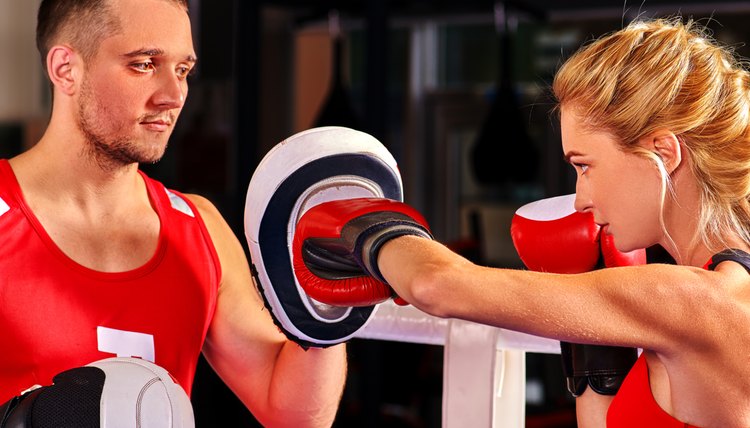What does fact checked mean?
At SportsRec, we strive to deliver objective content that is accurate and up-to-date. Our team periodically reviews articles in order to ensure content quality. The sources cited below consist of evidence from peer-reviewed journals, prominent medical organizations, academic associations, and government data.
The information contained on this site is for informational purposes only, and should not be used as a substitute for the advice of a professional health care provider. Please check with the appropriate physician regarding health questions and concerns. Although we strive to deliver accurate and up-to-date information, no guarantee to that effect is made.
Facts About Kickboxing

Kickboxing (particularly Cardio Kickboxing) is an aerobic form of exercise that helps strengthen and condition your body. It is a martial arts sport that will help you get fit and provide health benefits, such as reduced body fat, increased flexibility and strengthened heart. Kickboxing improves your balance and builds body strength. To minimize risk of injury and maximize workout results you should start with a warmup and learn the basic skills and movements from an instructor.
Warmup
A short warm up to start your kickboxing session will help you stretch your body and get your mind ready as well. A kickboxing warmup should include easy exercises so that you can concentrate more on getting your mind ready for your session. It will benefit you to have an instructor that helps you get motivated and mentally prepared for this sport that includes intensity, precision and safe body movement. Spend eight to 10 minutes on your warmup.
Strength
Kickboxing allows you to build your core and improve your balance. It helps strengthen your shoulders, arms and abs. Your lower body benefits with this exercise that tones your thighs and tightens your rear end. Kickboxing builds stronger muscles all over your body. The precision you use with your arms when you punch and your legs when you kick improves your flexibility.
Cardio
Kickboxing gets your heart pumping and your muscles working as you kick and punch your way through a workout. A study at the University of Mississippi measured the physical health benefits of kickboxing and found that it improves your fitness level and heart health. Punching and kicking can help you reduce stress for an added heart health benefit.
Burn Calories
Kickboxing can help you burn calories at a rate of 350 to 450 calories per hour. Moving both your upper and lower body during kickboxing helps you burn more calories. The high activity level of kickboxing allows your body to use your fat as energy for a great fat burning workout.
Injuries
When you first begin kickboxing you will be introduced to new moves and may use different muscles from other exercise you do. It is possible that you may sustain a joint or muscle injury. Researchers at East Stroudsburg University, Pennsylvania, conducted a survey to evaluate injuries in kickboxing classes. They discovered that 15 percent of class members and 31 percent of the teachers were injured. The body parts that you are at highest risk to injure are your knee, ankle, back, hip or shoulder.
Explore In Depth
References
Writer Bio
Jody Braverman is a professional writer and editor based in Atlanta, GA. She received a Bachelor of Arts in English from the University of Maryland, and she is a certified personal trainer, fitness nutrition specialist, and yoga teacher. She has written for various online and print publications, including Livestrong.com, SFGate, Healthfully, and Chron.com. Visit the writer at www.JodyBraverman.com.
